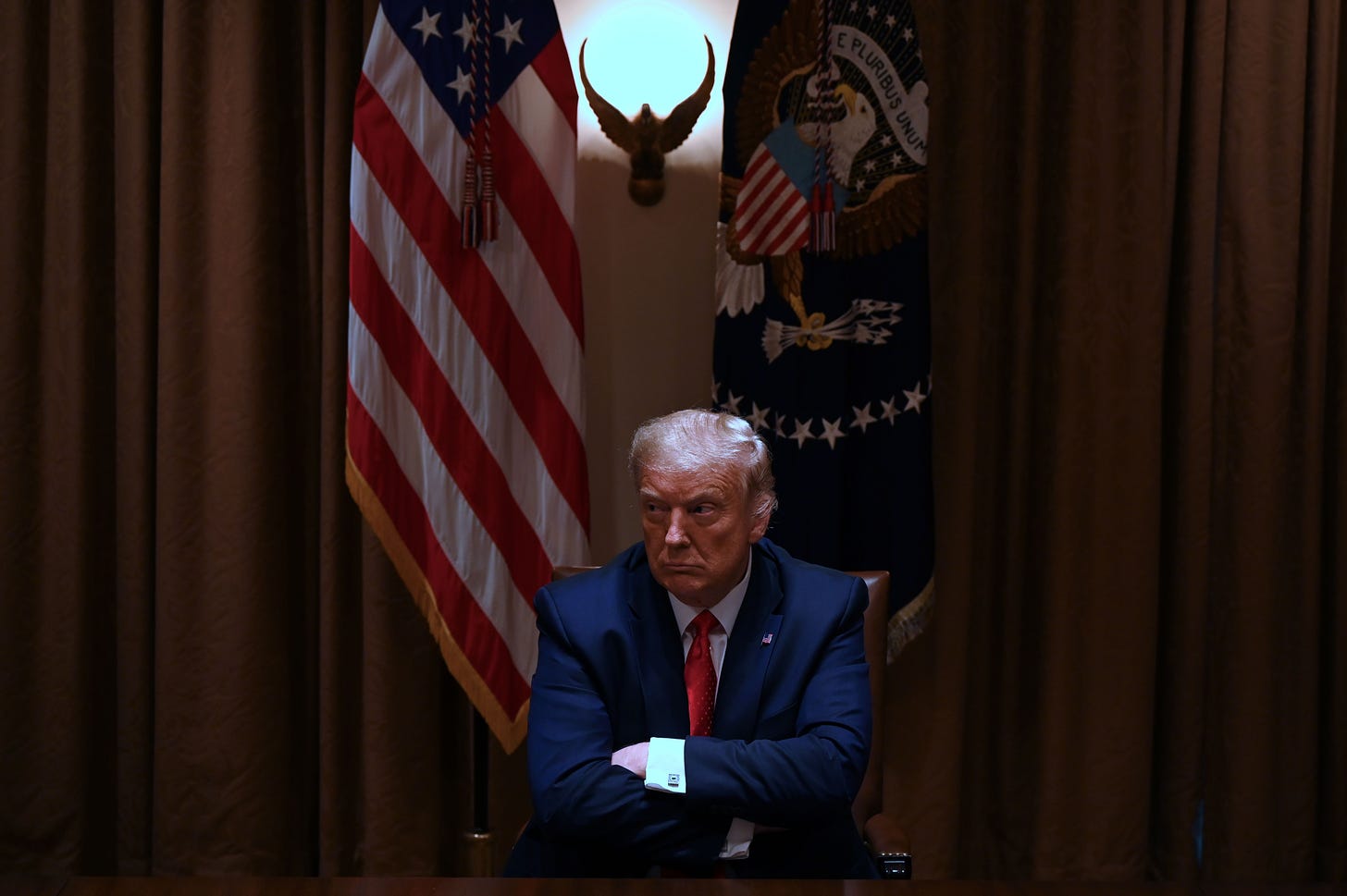Yes, Trump Could Jam His Controversial Nominees Past Congress. But...
The recess appointment route does exist. But it’s not clear how big an advantage it would give the incoming president.

COULD DONALD TRUMP, as he’s threatened, really circumvent the Senate to appoint officials without confirmation? Yes—if Congress lets him.
Ordinarily, the president appoints the cabinet, judges, and thousands of other officers of all manner with the advice and consent of the Senate. When the president sends a nomination to the Senate, after consideration by the appropriate committee, the lawmakers in that chamber can confirm that nomination by a simple majority vote. Only after confirmation by the Senate may the president finally make the appointment.
But what if the Senate is not in session, and thus unable to confirm the president’s nominations? After all, until not that long ago, it was not unusual for Congress to be out of session for a substantial part of each year. In that case, the Constitution allows the president to fill vacancies unilaterally, without the Senate’s advice and consent. These are known as recess appointments. And while they allow for executive and judicial posts to be filled in the absence of Congress being in session, they come with a notable downside: The appointments expire at the end of the subsequent session of Congress. In other words, any recess appointments Trump makes in 2025 would, in all likelihood, expire at noon on January 3, 2027.
This might seem like a potential loophole in the system. But for a while it existed with relatively little controversy. Then, in his second term, Barack Obama tried to use recess appointments to staff his administration as a means of circumventing GOP opposition, even though the Senate was actually in session. The issue was kicked to the courts.
And in 2014, the Supreme Court clarified the nature of the recess-appointment power in NLRB v. Canning. It ruled that a recess appointment may be made during a recess (whether between sessions of Congress or within a session) of at least ten days. Per that ruling, recess appointments may be used to fill not only new vacancies that appear during the recess, but also any preexisting vacancies.
(It’s worth noting here that we do not need to distinguish between adjournments, which bring a legislative day to an end, and recesses, which are breaks within a legislative day. Either would have exactly the same effect.)
So, how does such a break in congressional action take place?
If the House or Senate wishes to adjourn for more than three days, it must obtain the consent of the other body. In practice, this is effected by the adoption of a concurrent resolution by both houses. The two chambers simply decide to go to recess.
In recent years, however, the House and Senate have consistently met for pro forma sessions at least once every three days, in part to prevent the president from making recess appointments. This has occurred even when both houses have been controlled by the president’s party. The Senate has not adjourned for long enough to allow for recess appointments since February 2016.
And yet . . . if enough members of the House and Senate majorities want to adjourn in the upcoming Congress so that Trump can make recess appointments, there is a clear pathway to doing so.
The procedure for considering an adjournment resolution is much the same in both houses: The resolution may be brought up by any member. It is not debatable, so the Senate’s famous 60-vote cloture threshold is not likely to pose a problem.
That said, the resolution may be subject to amendment, as well as the motions to table (i.e., kill), postpone, or to refer it to a committee. But those options would merely delay the outcome in the Senate; they are certainly not insurmountable.
Ultimately, a simple majority of members voting is required to adopt the resolution. Which means that Republicans, by holding majorities in both houses next Congress, could set up the necessary conditions for Trump to make recess appointments—if enough of them chose to do so.
There is one further procedural consideration to add to this that could, if legally upheld, give Donald Trump another way to effect a recess.
The Constitution gives the president the power to adjourn Congress if the two houses disagree as to the time of adjournment. Under the most expansive reasonable interpretation of this, if one chamber adopted an adjournment resolution and the other voted it down, then the president could adjourn Congress for some time and make recess appointments. This is an entirely untested power—no president has ever attempted it—and there are strong constitutional arguments against its use in this manner. So any such attempt would certainly invite legal challenges. In any event, this course of action would still require at least some cooperation on the part of Congress. And given the Republicans’ very narrow majorities in the upcoming Congress, that cannot be taken as a given.
Trump’s stated reason for wishing to make recess appointments is that it would take too long for the Senate to confirm the nominations he makes. But that is not a serious concern. Thanks to changes in procedure made by the Senate over time, it is now easier than ever to overcome filibusters, whether actual or merely threatened, on nominations. In Trump’s first term, the Senate confirmed his major cabinet nominations within just a few weeks of his inauguration.
That leaves us with two reasons for which a president might wish to make recess appointments to the cabinet: either (1) to avoid subjecting the nominee to the Senate’s scrutiny, or (2) because the nomination does not have the support of a majority of the Senate.
Under these circumstances, Congress would not be voting for just an ordinary adjournment. Since Trump has overtly declared his wish to make recess appointments, lawmakers now know that a vote to allow the Senate to adjourn for ten days or more would be tantamount to a vote to allow him to make those appointments. If a senator is opposed to one of the nominations that Trump has preannounced, then it’s doubtful that he or she would go along with any proposal to facilitate recess appointments for those nominees.
In fact, we got a potential indication of this last week, when Matt Gaetz withdrew as Trump’s prospective nominee for attorney general, apparently because he was unlikely to be confirmed by the Senate. Rather than push for a recess to appoint Gaetz, Trump merely moved on to his next AG nominee.
In the end, Trump likely concluded that he would have had the same outcome if he forced the Senate to vote on Gaetz or pushed congressional Republicans to adjourn. A defeat was inevitable. It seems likely that Trump and his team will make the same calculations for controversial nominees going forward, too. Absent the pursuit of uncharted legal theories, if four Republican senators and all senators caucusing with the Democrats want a nominee defeated, then that nominee will likely end up defeated.
Kacper Surdy, known on social media as Ringwiss, is a student who has become an expert in congressional procedure and an invaluable resource for those on and around Capitol Hill.





